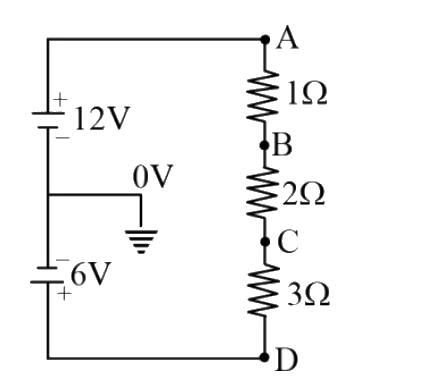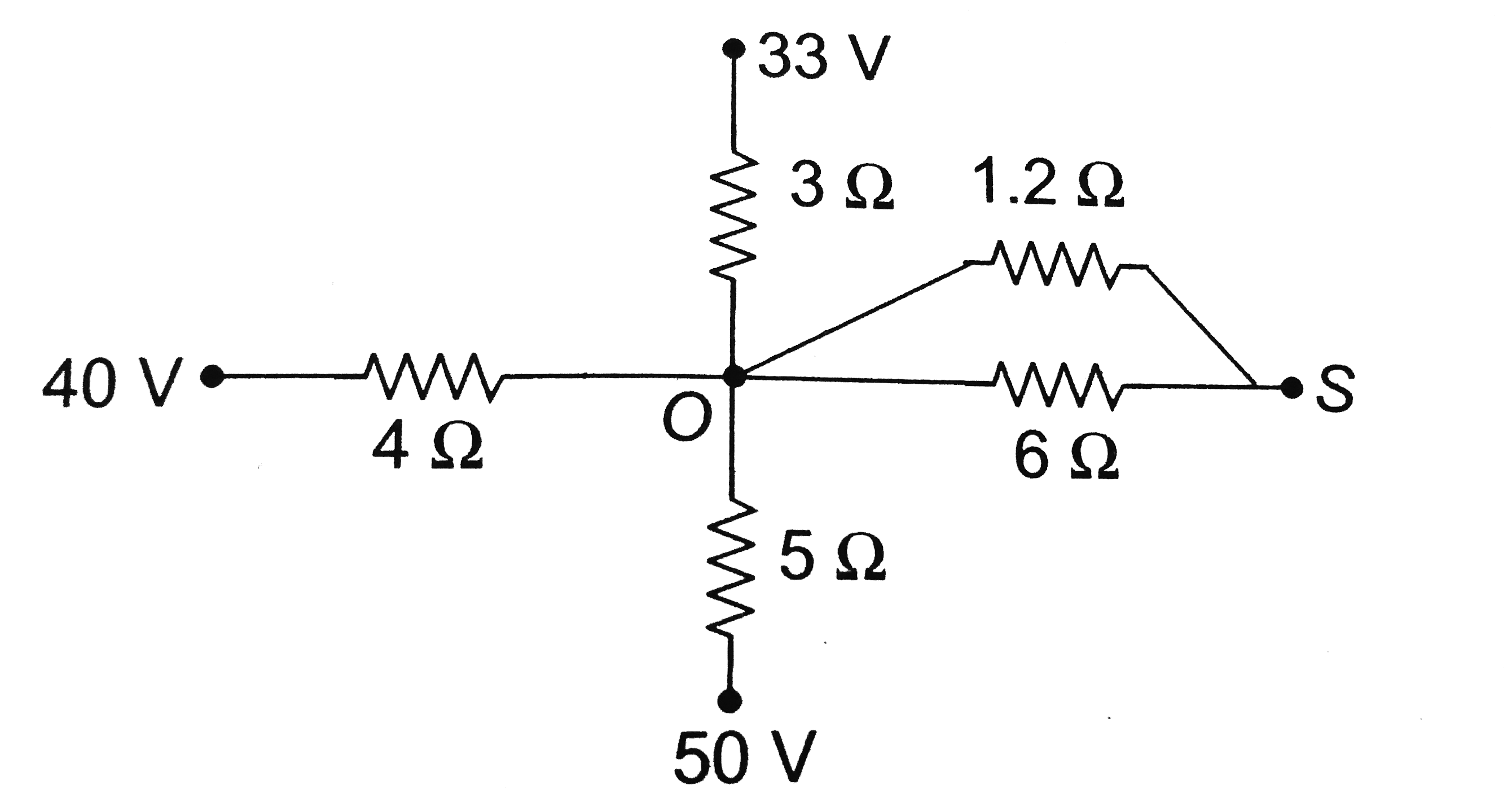In the circuit element given here, if the potential at point B=VB=0, then the potentials of A and D are given as

A
VA=−1.5V,V0=+2V
B
VA=+1.5V,VD=+2V
C
VA=+1.5V,VD=+0.5V
D
VA=+1.5V,VD=−0.5V
Video Solution
Text Solution
The correct Answer is:D
VA=1.5×1=1.5V,VC=−2.5×1=−2.5V
VC+2=VD⇒VD=−2.5+2=−0.5V
|
Updated on:21/07/2023
Topper's Solved these Questions
- BOOK - ERRORLESSCHAPTER - CURRENT ELECTRICITYEXERCISE - NCERT BASED QUESTIONS (DIFFERENT MEASURING INSTRUMENTS)74videos
CURRENT ELECTRICITY
- BOOK - ERRORLESSCHAPTER - CURRENT ELECTRICITYEXERCISE - NCERT BASED QUESTIONS (HEATING EFFECT OF CURRENT)67videos
CURRENT ELECTRICITY
- BOOK - ERRORLESSCHAPTER - CURRENT ELECTRICITYEXERCISE - NCERT BASED QUESTIONS (Grouping of Resistances)69videos
CURRENT ELECTRICITY
- BOOK - ERRORLESSCHAPTER - ATOMIC AND NUCLEAR PHYSICSEXERCISE - Assertion and Reason23videos
ATOMIC AND NUCLEAR PHYSICS
- BOOK - ERRORLESSCHAPTER - ELECTROMAGNETIC INDUCTIONEXERCISE - ASSERTION & REASON20videos
ELECTROMAGNETIC INDUCTION
Similar Questions
Knowledge Check
- Question 1 - Select One
In the circuit shown in the figure, if the potential at point A behind to be zero, the potential at point B is :
 A−1VB+2VC−2VD+1V
A−1VB+2VC−2VD+1V - Question 2 - Select One or More
The figure shows a arrangement of capacitors and a battery.

The potential of the points B and D are (if VC=0)AVE=8VBVE=12VCVD=8VDVD=12V - Question 3 - Select One
In the given circuit the potential at point B is zero, the potential at points A and D will be
 AVA=4V,VD=9VBVA=3V,VD=4VCVA=9V,VD=3VDVA=4V,VD=3V
AVA=4V,VD=9VBVA=3V,VD=4VCVA=9V,VD=3VDVA=4V,VD=3V
In the given circuit, the potential of the point E is
 View Solution
View SolutionIn the circuit shown in the figure, if potentail at point A is taken to be zero, the potential at point B is
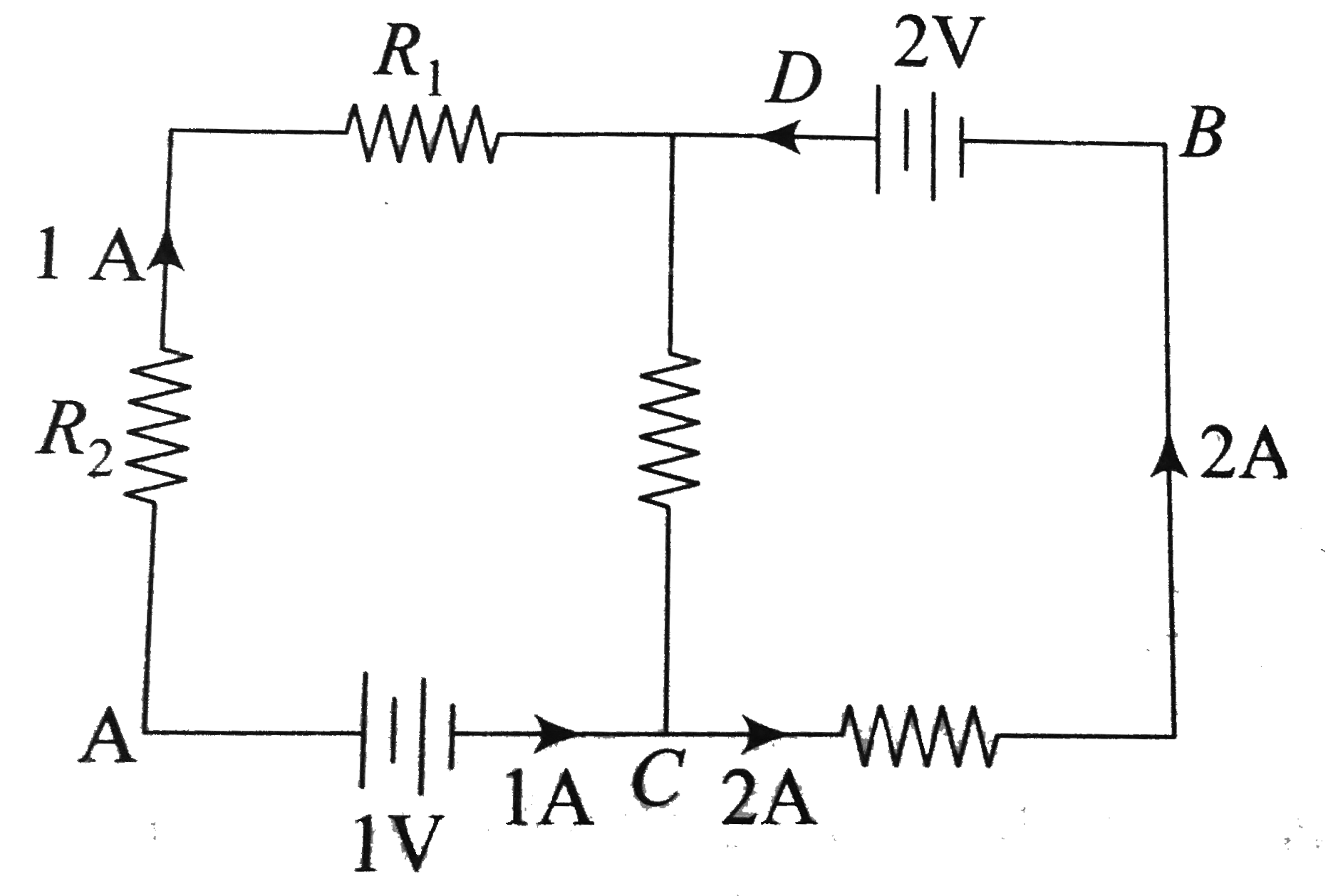 View Solution
View SolutionConsider the circuit given here. The potential difference VBC between the points B and C is
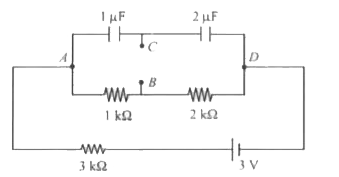 View Solution
View SolutionIn the following circuit , find the potentials at points A and B is.
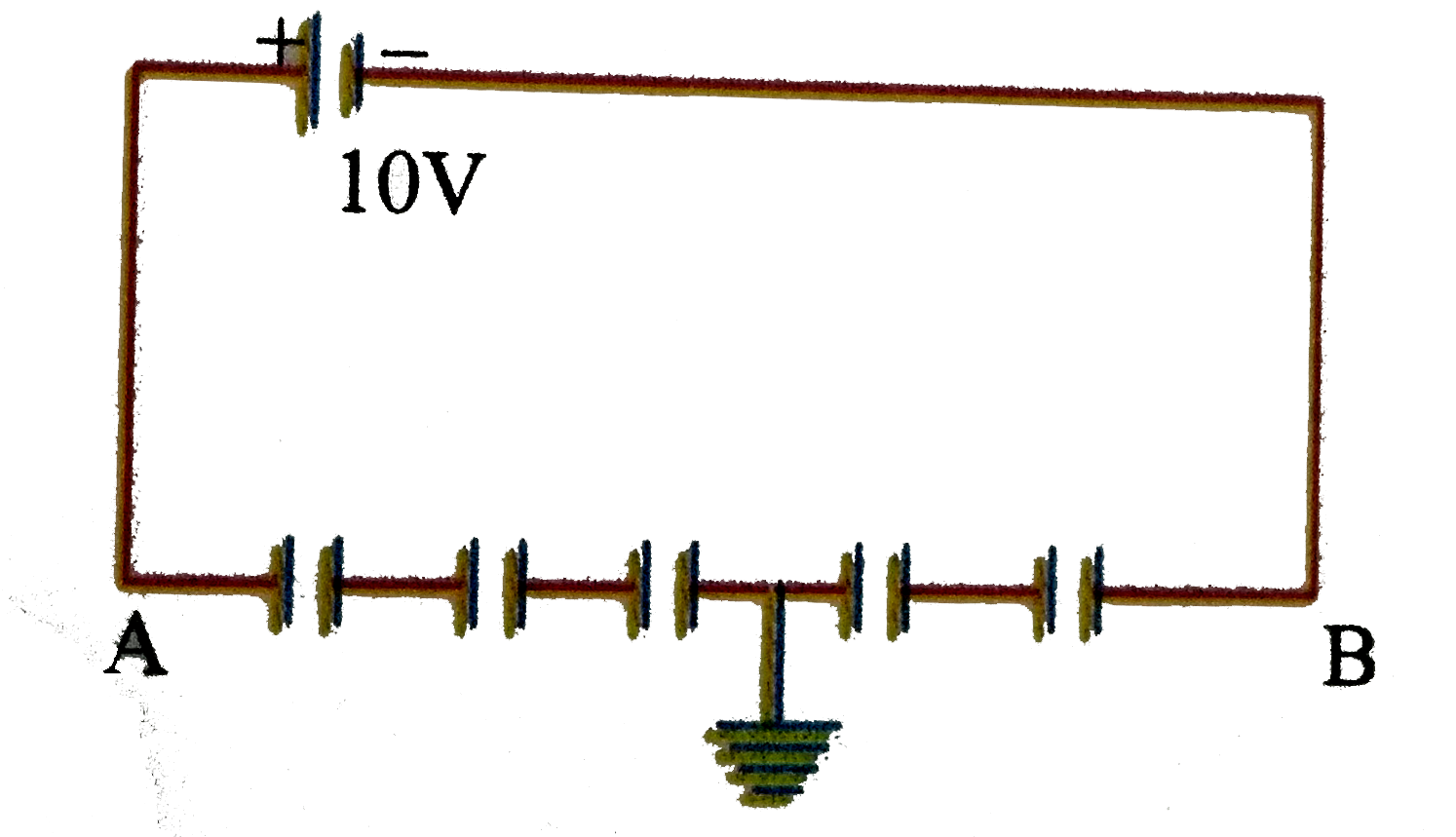 .View Solution
.View SolutionIn the circuit diagram shown in figure, the potentials of the points B, C and D are respectively.
 View Solution
View Solution


